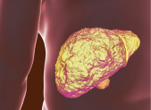Antibodies (Metabolism)
An imbalance in metabolism causes various diseases such as arteriosclerosis, diabetes mellitus, fibrosis, nonalcoholic steatohepatitis. Proteins include hormone and growth factor have been expected to be therapeutic target. Antibodies are useful for observing the localization and measuring the quantity of these molecules. Fujifilm Wako offers primary antibodies useful in metabolism research.
Product Line-up
More Information
What is Fibrosis?

Fibrosis is a phenomenon in which the connective tissues proliferate abnormally. The basis of fibrosis is an excessive accumulation of extracellular matrix (ECM), such as collagen produced by fibroblasts. Fibrosis is triggered by various factors, including viral infections, autoimmune reactions, and tissue damage1).
Mechanisms involved in fibrosis are required for repairing damage, if they function normally. However, when damage due to chronic inflammation or other conditions is prolonged, ECM accumulates excessively, which leads to serious tissue dysfunction. Fibrosis is seen in diseases such as idiopathic pulmonary fibrosis, liver cirrhosis, chronic kidney disease, and rheumatoid arthritis.
Mechanisms of Fibrosis
When epithelial and endothelial cells are damaged, lymphocytes are activated by inflammatory response. The activated lymphocytes release growth factors (TGF-β, PDGF) and cytokines (IL-13) that promote fibril formation, which activate macrophages and fibroblasts. After that, fibroblasts differentiate into myofibroblasts expressing α-smooth muscle actin (α-SMA), which produce ECM such as collagen. Excessive production of ECM by myofibroblasts due to chronic injury or inflammation leads to fibrosis1).
TGF-β is considered the molecule that plays the central role in fibrosis. Although TGF-β is normally inactivated so that it cannot bind to its receptors, activation by thrombospondin-1 (TSP-1), matrix metalloproteinases (MMPs), integrins, reactive oxygen species (ROS), or the like allows binding of TGF-β to its receptors2). When TGF-β binds to its receptors (TGF-βR1, ALK), the transcription factor Smad2/3 is phosphorylated and transferred into the nucleus, and then it promotes downstream gene expression.
CTGF is a typical downstream gene, the transcription of which is induced by Smad. CTGF is a factor necessary for fibrosis through the TGF-β signal and promotes differentiation to myofibroblasts and synthesis of collagen3).
It has been clarified that in addition to TGF-β signaling, Wnt signaling and YAP/TAZ signaling are related to fibrosis4). It is necessary to understand the molecular mechanism of fibrosis more in detail, including signal transduction, in order to prevent and treat fibrosis.
References
- Wynn, T. A.: J. Pathol., 214(2), 199(2008).
Cellular and molecular mechanisms of fibrosis - Biernacka, A., et al.: Growth Factors, 29(5), 196(2011)
TGF-β signaling in fibrosis - Duncan, M. R., et al.: FASEB J., 13(13), 1774(1999).
Connective tissue growth factor mediates transforming growth factor beta-induced collagen synthesis: down-regulation by cAMP - Piersma, B., Bank R. A. and Boersema, M.: Front. Med., 2, 59(2015).
Signaling in Fibrosis: TGF-β, WNT, and YAP/TAZ Converge
For research use or further manufacturing use only. Not for use in diagnostic procedures.
Product content may differ from the actual image due to minor specification changes etc.
If the revision of product standards and packaging standards has been made, there is a case where the actual product specifications and images are different.
The prices are list prices in Japan.Please contact your local distributor for your retail price in your region.



